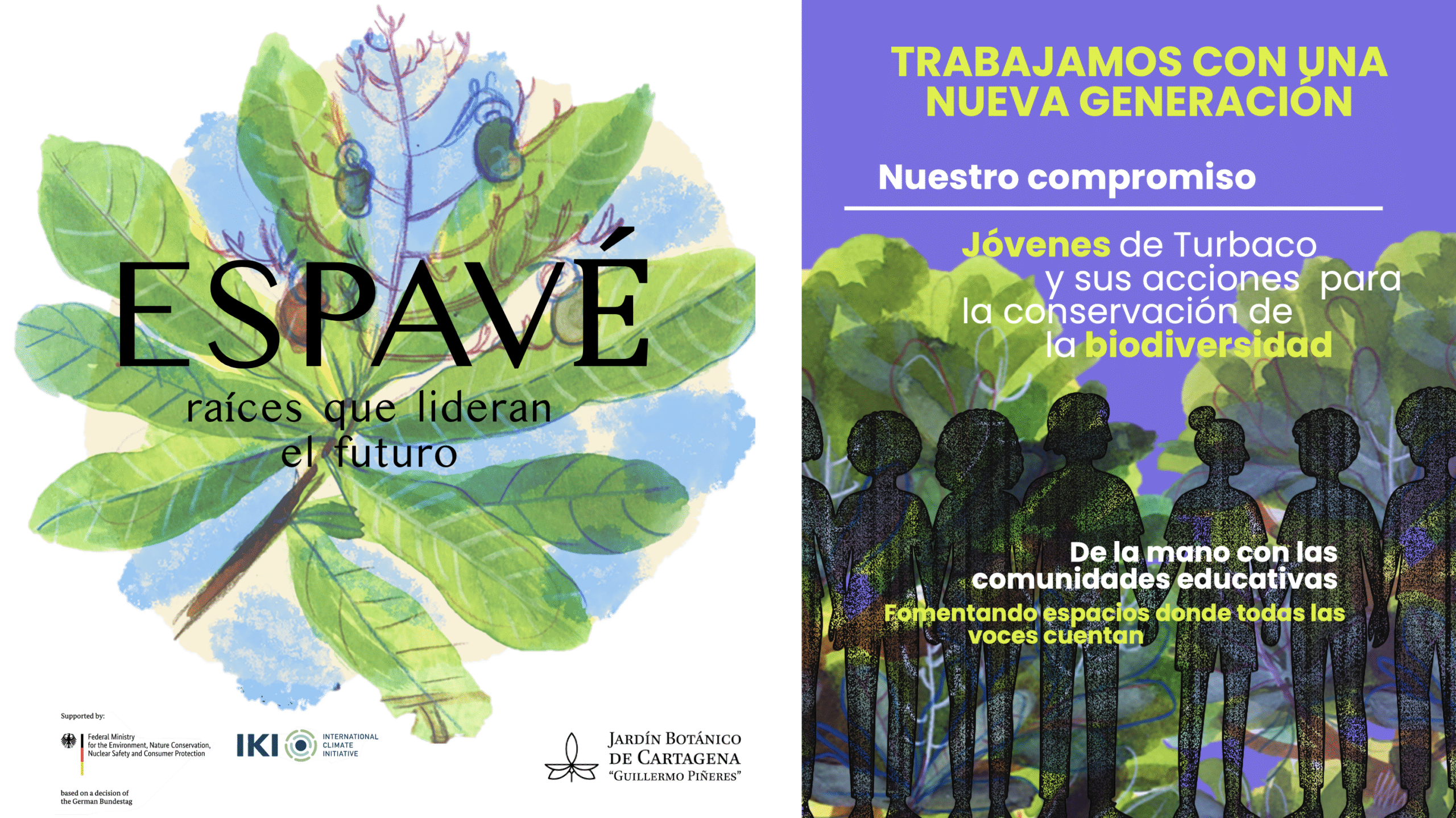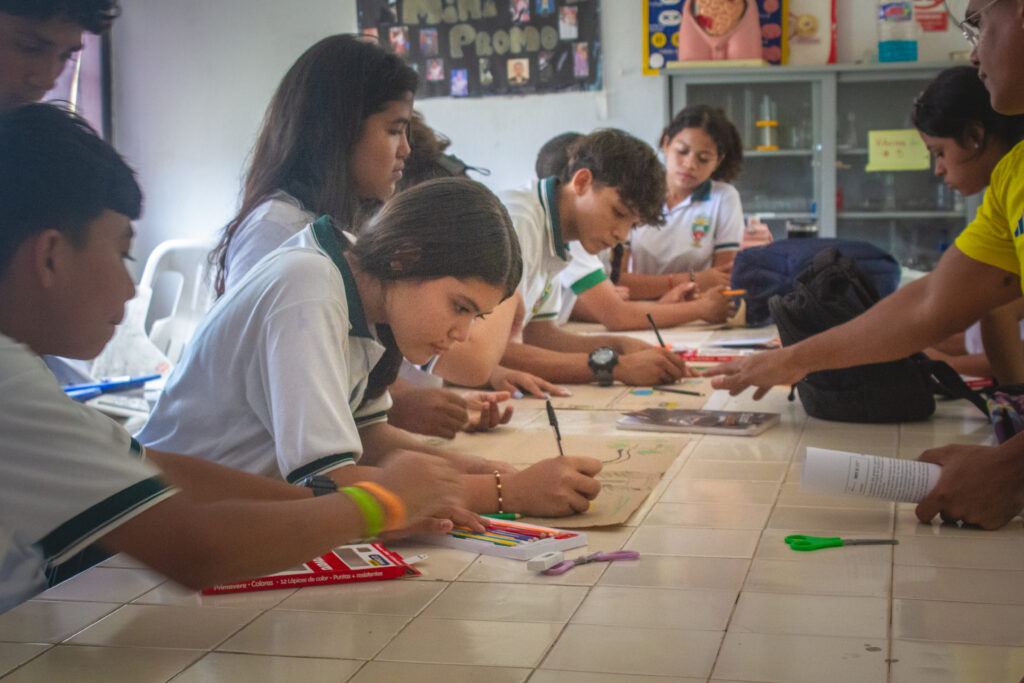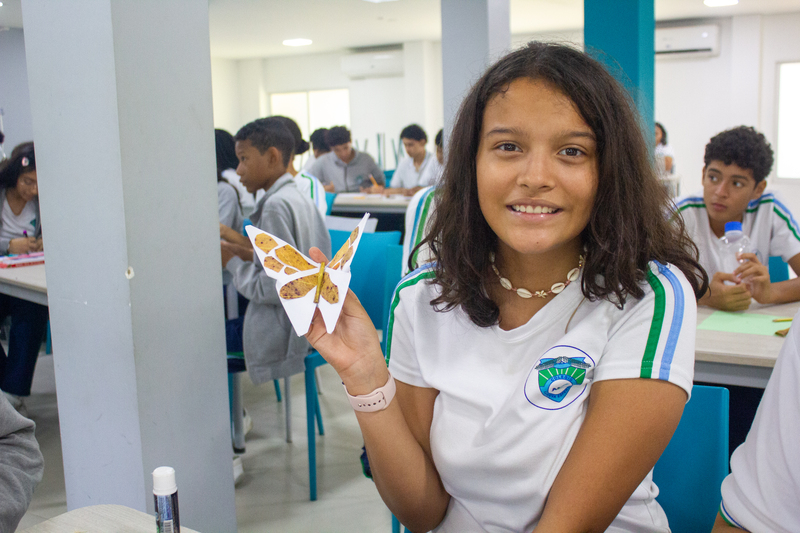The project ESPAVÉ, implemented within the framework of the International Climate Initiative (IKI), empowers the youth of Turbaco, Colombia, to see nature with new eyes.
In Turbaco (Bolívar), students from six schools took part in an activity of the IKI ESPAVÉ project that is transforming the way they perceive nature. Using dried leaves, seeds, fruits, and flowers, the students created figures inspired by birds, butterflies, and plants of the tropical dry forest, discovering the biodiversity that shapes their everyday surroundings.
More than an artistic exercise, the activity became a space for reconnection with their territory. By exploring textures, colors, and shapes, participants identified elements of the landscape that often go unnoticed and learned about their ecological importance. This hands-on approach allowed each student to represent local biodiversity with creativity, strengthening their sense of belonging and their connection to the environment.
The activity also included moments of conversation and reflection led by the education team of the Cartagena Botanical Garden, who highlighted the importance of biodiversity conservation in the Colombian Caribbean ecosystems. For many students, it was a revealing experience that changed how they observe their surroundings and helped them understand how nature directly influences their daily lives.
The resulting artworks were shared with the school community, expanding the project’s reach and encouraging more people to appreciate the richness of Turbaco’s forests. Carrying out these activities within schools ensures long-lasting impact, turning classrooms into spaces where environmental awareness takes root and grows over time.
With initiatives like ESPAVÉ, the Cartagena Botanical Garden reaffirms its commitment to conservation and education. Its work demonstrates that collaborating with local schools not only inspires new generations but also lays the foundation for a more respectful, informed, and active relationship with the region’s biodiversity.



